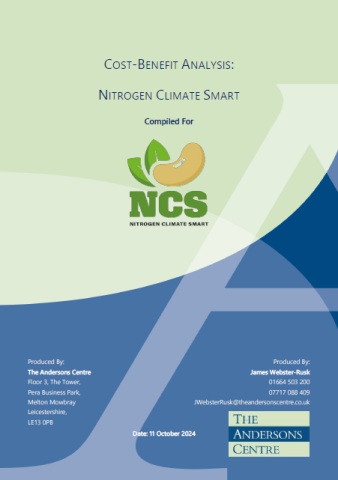Executive Summary
The Nitrogen Climate Smart (NCS) project is a £5.9 million initiative led by the Processors and Growers Research Organisation (PGRO) and funded by UK Research and Innovation (UKRI). The project aims to reduce the UK's agricultural emissions by 1.5 million tonnes of CO2e annually, representing 54% of the sector's maximum potential reduction. Central to the project is increasing the cultivation of pulses and legumes in UK crop rotations to 20% and replacing up to 50% of imported soymeal in livestock feed with domestically grown, climate-friendly alternatives.
This cost-benefit analysis (CBA) evaluates the financial and environmental impacts of these proposed changes, following the framework outlined in HM Treasury’s Green Book. The analysis covers various farming sectors including arable, pigs, dairy, grazing livestock, and poultry, assessing both baseline and projected scenarios. The two key objectives of this work are to identify the best scenario for optimizing environmental impact and financial return for farmers and to determine the carbon cost-benefit of transitioning to increased pulse production in the UK.
Key findings indicate that while increasing the proportion of pulses in crop rotations has the potential to significantly reduce emissions, the present lack of direct financial benefits for farmers may not outweigh the costs without further incentives. For example, the analysis shows that the environmental benefit from reducing carbon emissions in arable farming yields a social benefit of £132 million, but this is outweighed by a £166 million cost to farmers. However, additional nitrogen savings from legume crops may tip the balance in favour of the change, providing a more favourable benefit-cost ratio (1.2:1).
In the livestock sector, particularly in pig farming, replacing soymeal with UK-grown legumes could lead to significant environmental gains. If soymeal linked to land-use change is replaced, the resulting carbon savings could offset the financial losses, offering a benefit-cost ratio of 3.8:1. To enable the emissions savings, industry needs to find a way to monetise the benefit.
This initial report serves as the first of three CBAs to be conducted throughout the project’s lifecycle, with further refinement expected as more data becomes available from ongoing trials.
Download the full report below.





